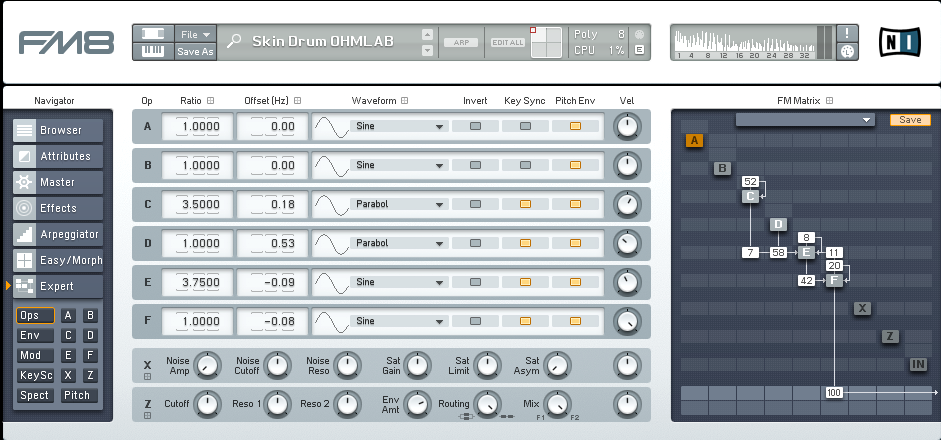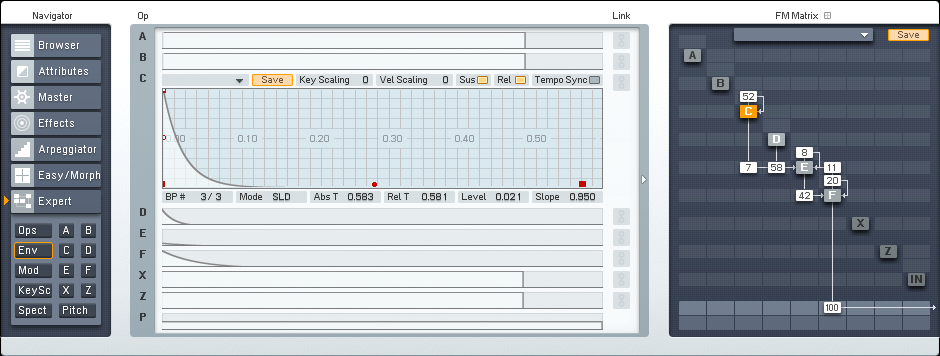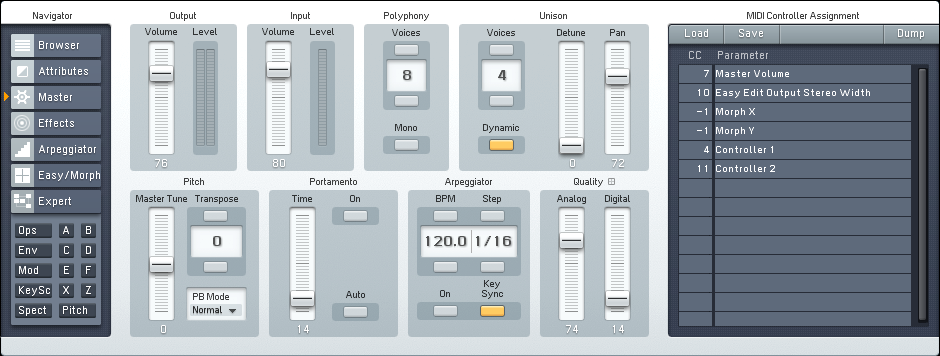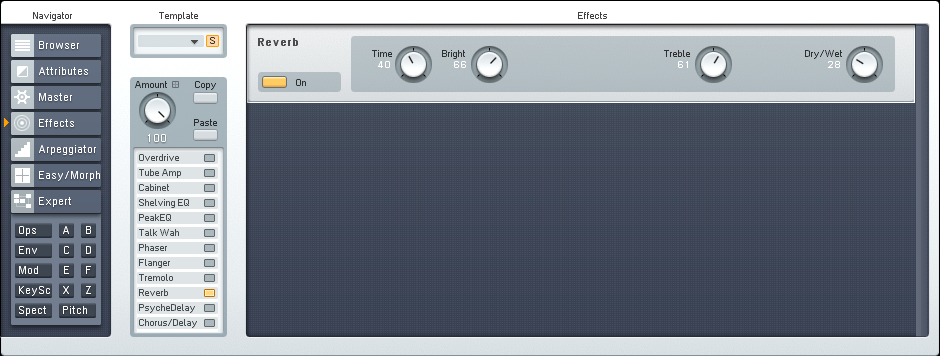
FM8 Tutorials
Add Interest to Your Music with Custom Designed FM8 Percussion Instruments
One easy way to add more flavor and character to your music is to use custom made FM8 percussion instruments. This quick lesson shares how to synthesize a simple skin drum.
As a drummer (I know, I know…) I often find that much of the mainstream music floating around these days lack percussive embellishments. It is easy and fun to design your very own FM8 percussion instruments, and it really doesn’t take much time either. And the best part is that once you make one, you can use it as a template for new sounds in the future. Much of the time spent on sounds like this one is in the envelope window, getting the delivery just right. This is why it’s best to perfect it, then save it and use it again and again, each time with a slightly different twist. Perhaps you swap out a couple of waveforms and add more feedback on a couple of the operators to make your own cowbell. Or perhaps you ease off the velocity of all the operators to get more of a soft mallet feel. The sky is the limit!
This particular FM8 percussion instrument is similar to a simple skin drum, of no particular type. It is easily used with a broad range of drum sounds and will add a human element to your music that simply will not be found anywhere else–especially once you make it your own with a little tweaking. As you can see in the FM Matrix below, this is actually a pretty simple sound to route.
I prefer to get the envelopes set up next when designing FM8 percussion instruments. This way as I progress through the rest of my workflow I hear the sound as it will be delivered. As you can see, there are variations in the envelope curves, and this helps a great deal in creating a more believable drum sound. Real percussion instruments of all types have lots of character, mostly derived from small imperfections and differences in shape, size, materials, etc. It is best that you try to emulate these things when working on your own.
Next up is the Master window, where the total number of unison voices is increased to provide more punch. It also allows us to spread those voices out and introduce some Analog and Digital Quality for character and interest. This is a very important step in working with FM8 percussion instruments and can vary greatly from sound to sound, depending upon what you are going for.
I chose to add a touch of reverb to this drum, trying to emulate how a simple skin drum might ring out when struck.
Below is a small sample of this drum in action, alongside some other percussive instruments. You can just as easily program the arpeggiator to generate both simple and complex rhythmic patterns alike.
[audio:https://www.fm8tutorials.com/wp-content/uploads/2013/07/FM8-Skin-Drum-OHMLAB.mp3|titles=FM8 Skin Drum OHMLAB]



 YOUTUBE
YOUTUBE